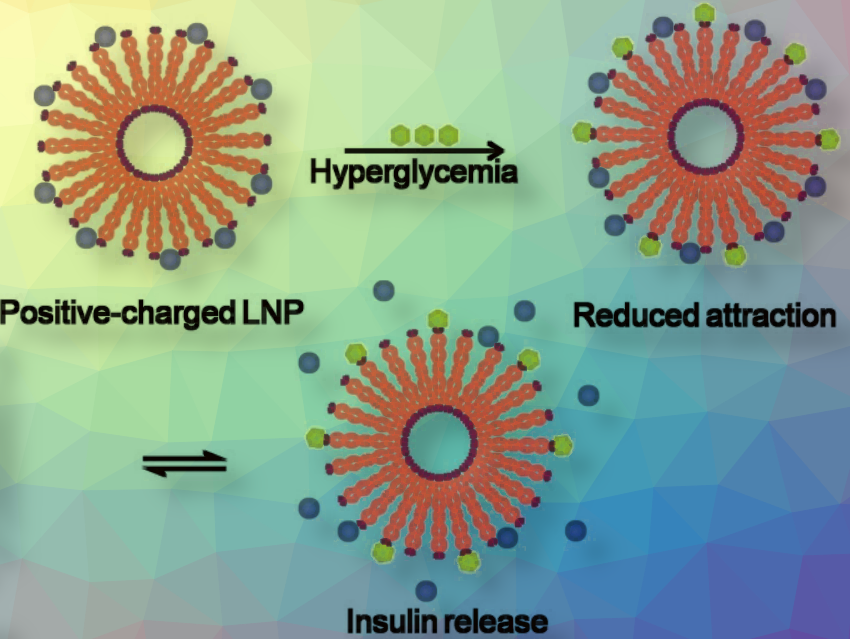Insulin and Type 1 Diabetes
Patients with type 1 diabetes live with a constant risk of hyper- or hypoglycemia. Precisely controlled insulin release could help to improve regulation of their blood sugar levels. A research team has introduced a novel insulin formulation that can be switched on by glucose: Lipid nanoparticle carriers release more or less insulin depending on the blood sugar level.
In our bodies, the insulin level in our plasma is primarily regulated by β-cells in the pancreas and reflects fluctuations in the blood sugar level. Patients with type 1 diabetes can produce very little or no insulin and require several daily injections of a fast-acting insulin as well as one or two injections of a long-acting insulin to keep their blood sugar at a normal level. Alternatively, they wear an insulin pump that provides continuous infusion.
The insulin formulations cannot react to changes in the blood sugar level and thus do not allow for the precise regulation of blood sugar. If an insulin overdose is administered, a meal is missed, or too little carbohydrate consumed before strenuous physical activity, there is increased risk of acute, life-threatening hypoglycemia.
Insulin formulations that respond to glucose, mimicking the function of β-cells, could improve insulin therapy. Various approaches with insulin “carriers” made of polymers with incorporated glucose oxidase as a glucose detector suffer from two problems: The polymer carriers are not of uniform molecular weight and glucose oxidase is toxic if released into the body.
Biocompatible Lipid Nanoparticles Used as Carriers
A Chinese team led by Jinqiang Wang and Zhen Gu at Zhejiang University, Zhejiang Cancer Hospital, and the University of Hong Kong chose a different approach based on biocompatible lipid nanoparticles used as carriers with lipids with uniform chemical structures (phenylboronic acid-based quaternary amine-type cationic lipids). Lipid nanoparticles are already in wide clinical use as drug carriers, e.g. in mRNA vaccines. Upon mixing insulin and the lipid nanoparticles, a heterostructured insulin complex is formed immediately arising from the electrostatic attraction.
A section of the lipids was modified so that the surfaces of the self-aggregated nanoparticles carry many positive charges. Insulin molecules with a negative charge electrostatically bind to the nanoparticles and are released slowly when the blood sugar level is normal. If the blood sugar level is high, certain lipids in the nanoparticles form chemical bonds with the glucose, reducing the positive charge at the surface and significantly accelerating the release of insulin.
In diabetic mice treated with the new insulin formulation, it was possible to maintain a normal blood sugar level for six hours. After injection of glucose, the blood sugar in the treated diabetic mice decreased to a normal level just as rapidly as that of healthy mice.
In the future, a combination of this glucose-responsive insulin formulation with a dispensation device controlled by a wearable electronic sugar detector could significantly improve regulation of the blood sugar level in diabetes patients.
Reference
- Glucose-Responsive Charge-Switchable Lipid Nanoparticles for Insulin Delivery,
Yun Liu, Yanfang Wang, Yuejun Yao, Juan Zhang, Wei Liu, Kangfan Ji, Xinwei Wei, Yuanwu Wang, Xiangsheng Liu, Shiming Zhang, Jinqiang Wang, Zhen Gu,
Angewandte Chemie International Edition 2023.
https://doi.org/10.1002/anie.202303097




